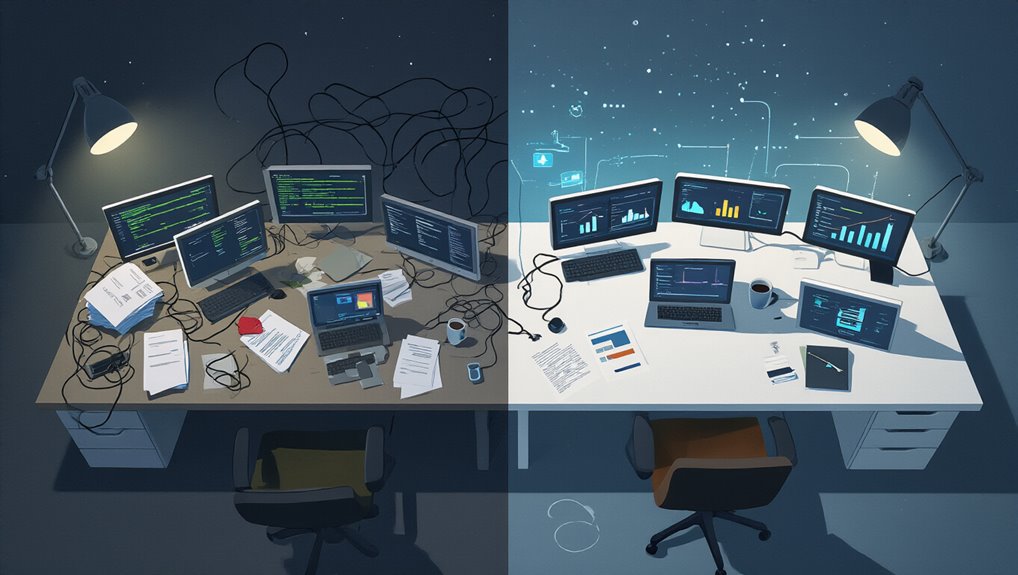Information Technology Service Management (ITSM) initiatives stumble across organizations of all sizes, despite their critical importance to business operations. The failures often stem from a lack of clear planning and vision, resulting in lost focus and abandoned projects. Poor data quality undermines effective decision-making while insufficient training leaves staff struggling with new tools and processes. Remarkably, 30% of organizations still rely on manual asset management methods, increasing error risks and reducing operational visibility.
Traditional ITSM implementation frequently leads to missed service request deadlines, causing widespread user dissatisfaction. IT staff experience increased stress and burnout from repetitive, inefficient service desk work. Organizations frequently overspend on ITSM tools that don’t align with business needs, while ineffective risk management leaves them vulnerable to disruptions. The overreliance on legacy frameworks further limits adaptability to evolving enterprise IT complexity. Resistance to change from service desk personnel often results in low engagement levels that undermine implementation success. Companies that successfully implement integrated ITSM systems experience a 92% lower churn rate and significantly improved organizational efficiency compared to those with siloed approaches.
Current adoption statistics reveal concerning gaps. 11% of organizations operate without any ITSM tool whatsoever. Even among those with established capabilities, dissatisfaction remains high—61% with Service Request Management and 80% with Knowledge Management implementations report needing significant improvements. Larger organizations typically demonstrate more mature Incident, Change Enablement, and Problem Management processes.
ITSM is now transforming toward holistic, business-centric service management beyond traditional IT boundaries. End-to-end visibility and real-time responsiveness have become essential. Integration with DevOps practices drives agility and faster software deployments without compromising stability.
Enterprise Service Management (ESM) expands ITSM principles to non-IT functions, while AI and automation enhance service desks for proactive incident resolution. Survey data indicates that ease of use is the top evaluation factor for 63% of organizations selecting ITSM solutions. Manual IT asset tracking creates security vulnerabilities and compliance risks. The convergence of IT Asset Management with ITSM platforms supports better decision-making and reduces financial losses. Organizations with poor ITAM capabilities struggle with reliable configuration management database data.
Rising cyber threats are pushing ITSM toward embedding AI-powered security monitoring and automated compliance reporting. The modern enterprise requires an ITSM approach that embraces these transformations—one that balances technological innovation with human-centered design to overcome traditional failures and deliver exceptional service experiences.









